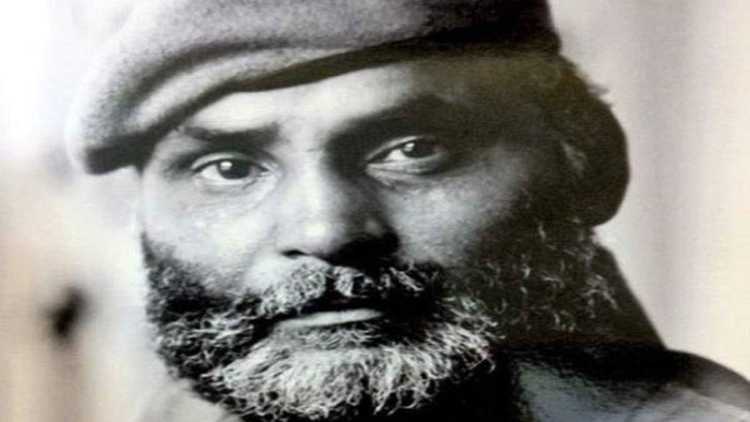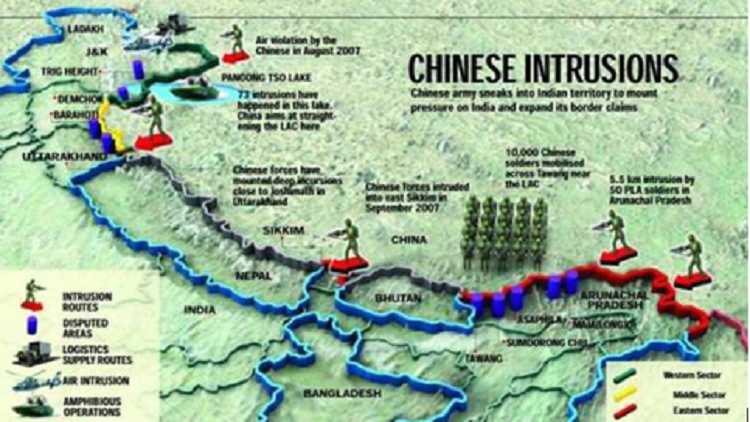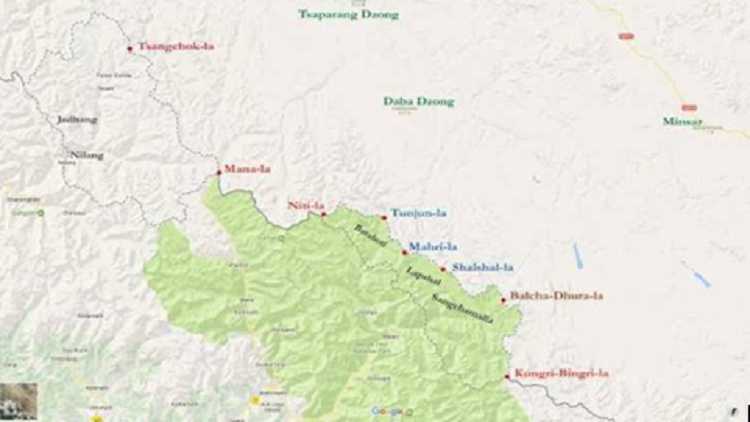
Ankit Sharma/Dehradun
On Tuesday, India marks the first anniversary of the Galwan stand-off against the Chinese Army that snatched saw 20 Indian soldiers lay down their lives for the country and an unknown number of Chinese getting killed in the clashes.
About four and a half months after the Galwan face-off, India and China agreed upon a 5-point plan to recede tensions on the Line of Actual Control (LAC).
However, not just Ladakh, there have been 23 disputed spots in the stretch of 3,488-km LAC. And new friction points are likely to emerge in the years to come.
Whereas, Barahoti in the Chamoli district of Uttarakhand is still an un-demarcated entry that PLA may bring into play to increase infiltration in the Indian Territory.
Recently, the district administration also sent a team, comprising of 18 officers and staff, to survey the areas of the Mahari and Barahoti region along the LAC and prepare a report on Chinese activities along the border, supply needs of the army, roads, and communication. Due to its significance to border security, the district administration carries exercises such an activity every year.
However, the pasture land settled in the lap of snowy mountains has a decade-long history of attempts of incursion by the Chinese army since 1954. And this is why, after the Ladakh Stand-off, the contours of national security strategy have levelled up the focus in this area near the McMahon line at the LAC.
Going back to more than 100 years ago, On July 31, 1890, the Officiating Deputy Secretary in Foreign Department wrote to the Chief Secretary of the North-Western Provinces and Oudh.“It appears from the report submitted by Durga Dutta, Patwari, that some Tibetans recently came to Bara Hoti unarmed, and invited the people for trade.According to the department, any attempt to claim or encroach over the area was not reported.


 History of Chinese intrusions in the recent past
History of Chinese intrusions in the recent past
However, after the first encroachment attempt in 1954, The 80 sq km sloping pastures of Hoit Plains have observed umpteen incursion attempts by PLA. Barahoti was listed as a disputed area in 1958.
A government document "White Paper: Notes, exchanges, letters between the Governments of India and Chinese side (Between 1954-1959)" also mentions that communication held by both sides on Barahoti came to a mutual agreement that no country shall claim jurisdiction on Barahoti unless the dispute is settled.
The five principles of peaceful coexistence or Panchsheel in the preface of the 1954 Sino-Indian Agreement were drawn by Chinese Premier Chou-en-lai during his visit to India in the same year.
After a series of reports by Intelligence agencies on Chinese Infiltration attempts in 1958, Brig Gyan Singh under the mentorship of Tenzing Norgay went to conduct recce in the Barahoti region. In 1961, Prime Minister Pt Jawahar Lal Nehru also gave orders to the Eastern command to establish a military post in Barahoti to ward off the Chinese claims n winters.
Colonel Narendra Kumar of the Kumaon regiment famously known as Bull who earned his nickname during a boxing match against a senior cadet, Sunith Francis Rodrigues, who rose to become the Chief of the Army Staff, had successfully established a strategic post in Barahoti after PM Nehru called him for a secret mission to stop the Chinese menace.
Colonel narrates in a video that how a high-level core commanders meeting was also called on, where Colonel Kumar was told that for the last 250 years Garhwal Maharaja followed by the British East India Company had been collecting taxes from Barahoti. The Chinese had captured 150 km of the Eastern sector area in and around the Barahoti region since 1954 but only come there in June and July.
Lt Gen Baljit Singh (Retd), then a captain, was also sent to the mission for establishing a post at the Bara Hoti plains region of India, under the command of Brigadier Bisheshwar Nath of the 9th infantry brigade, six months before the war broke out in 1962 which enabled checkmating a Chinese move to seize an important grazing ground at LAC.

The Line of Actual Control between India and China
Lt Gen Singh has mentioned the strategic importance of fluttering the tricolor at Barahoti in the year when China attacked the country.
In 2000, the Barahoti area was declared as a non-military zone where the Indian side agreed that ITBP will not patrol along the border with weapons. Earlier, the force had been guarding the borders in a non-combative role.
The then Chief Minister of Uttarakhand Vijay Bahuguna was speaking at the chief ministers' conference on internal security, he said, "There have been 37 reported incursions by Chinese patrol parties, during the last five years in Uttarakhand, which has a 350-kilometre long border with China. It happened six times in 2006, twice in 2007, ten times in 2008, eleven times in 2009, five times in 2010 and thrice in 2011."
In 2016, the Chinese attempted to breach the borders with arms.
Centre for Land and Warfare Studies (CLAWS), in its report in the year 2017 also raised the Intelligence Bureau's concern of Chinese probable incursions into the Barahoti plain. The report further informed that the army has deployed troops in the sector to sabotage any infiltration attempts by PLA. However, the need for ITBP to come under army command cannot be ruled out.
In 2017, The Institute for Defence Analysis and Studies (IDSA) said that there would be more incidents like the Dhoklam build-up in near future and Barahoti in Uttarakhand could be the new dormant area of Chinese vicious plans.
In 2017, Chief Minister Trivendra Singh Rawat, while warning China for repeated provocations, said that he does not have the official records about the transgression and also there is no demarcation of which part belongs to either side of the borders. The same year PLA army helicopters hovered over the Indian Territory through Barahoti, for some time and returned back.
in 2020, merely four months after the tragic Galwan Incident, yet again PLA had transgressed into the Indian territory in Barahoti on Yaks and returned back the same day.
The history of transgressions in the Barahoti area of Chamoli shows the ferocious side and nefarious designs of PLA. However, despite the build up on the other side of the border, India refuses to step back with its mighty army guarding the borders in adverse conditions.
